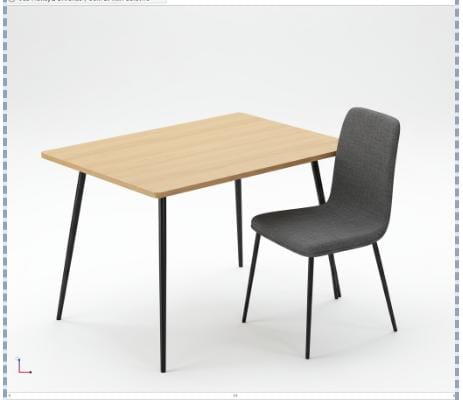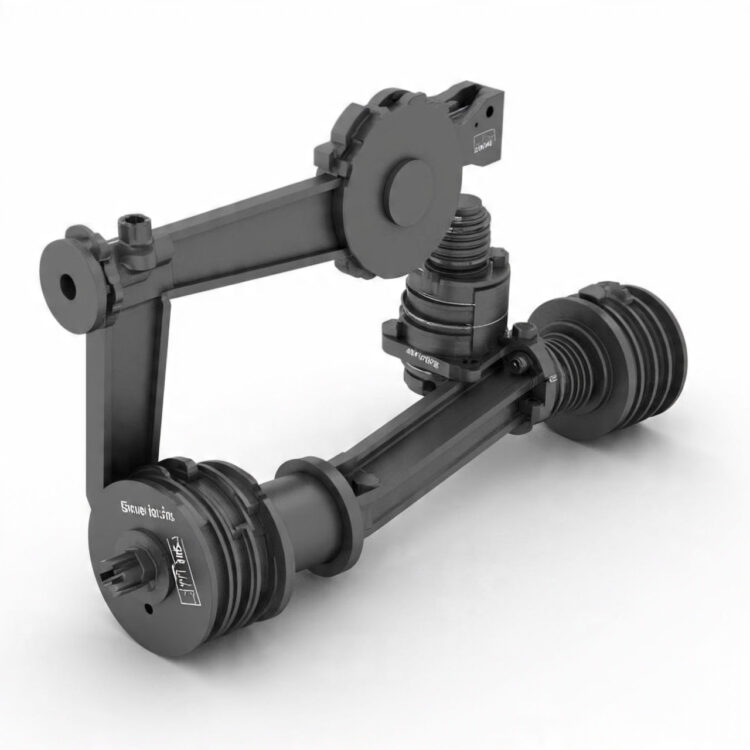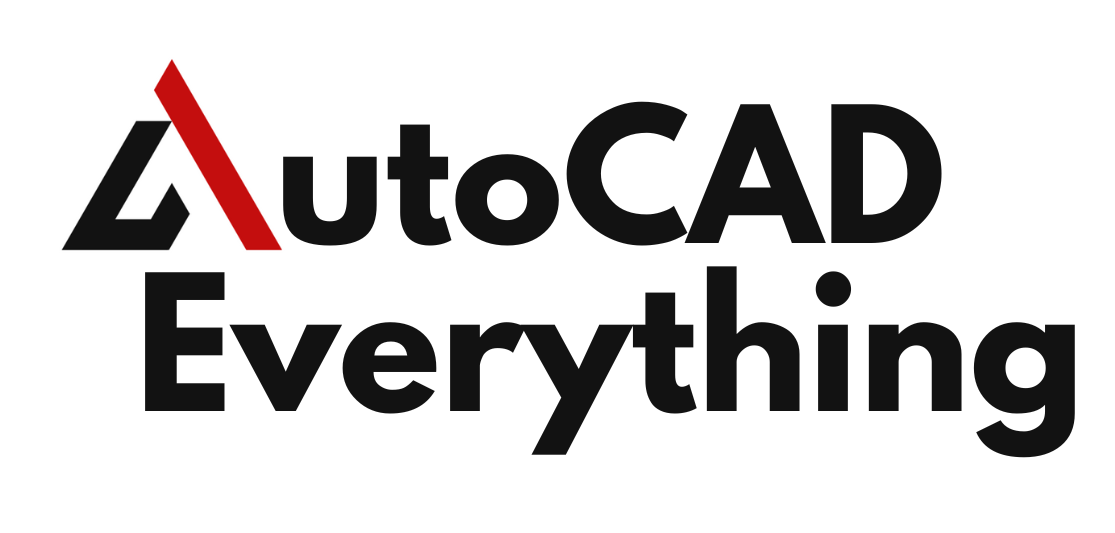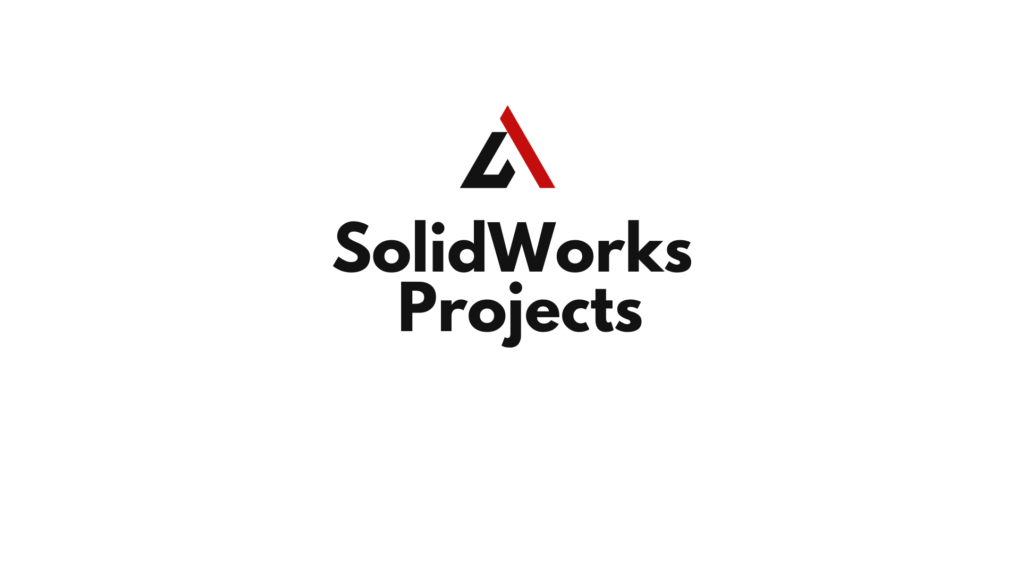Introduction: Turning Ideas into Reality with SolidWorks Projects
SolidWorks is more than just a software; it’s a powerful platform for innovation, allowing engineers, designers, and hobbyists to transform abstract ideas into tangible virtual models. While mastering its features is crucial, the true measure of proficiency and creativity comes from applying that knowledge to real-world or conceptual projects. Engaging in SolidWorks projects not only reinforces learning but also builds a compelling portfolio, develops problem-solving skills, and sparks new ideas.
This comprehensive article serves as a wellspring of inspiration, offering a diverse array of SolidWorks project examples across various industries and complexities. Whether you’re a beginner looking to solidify your fundamentals, an intermediate user aiming to tackle more intricate designs, or an advanced user seeking to push the boundaries of the software, this guide will provide concrete ideas and insights to kickstart your next SolidWorks endeavor. Each example will highlight key SolidWorks features relevant to its creation, encouraging you to explore different facets of the software.
Table of Contents
The Value of Undertaking SolidWorks Projects
Before diving into examples, it’s worth reiterating why hands-on projects are indispensable:
- Skill Reinforcement: Projects provide practical application of learned features, cementing your understanding of part modeling, assemblies, drawings, and simulations.
- Problem-Solving: Every project presents unique challenges, forcing you to think critically and creatively to find solutions within SolidWorks.
- Portfolio Building: Completed projects are tangible proof of your abilities, essential for students seeking internships or professionals looking to advance their careers.
- Design Intent Development: Working on full projects helps you understand how to incorporate design intent from the ground up, leading to more robust and adaptable models.
- Exposure to Industry Practices: Many projects mimic real-world design scenarios, giving you a taste of industry standards and workflows.
- Passion and Creativity: They allow you to explore your interests, bring your personal ideas to life, and foster a deeper passion for design and engineering.
Beginner-Friendly Projects: Solidifying Fundamentals
These projects are excellent for those new to SolidWorks or looking to reinforce basic part and assembly modeling concepts. They primarily focus on fundamental sketching, extruding, revolving, and simple mating.
- Simple Table or Chair:
- Focus: Basic extrusions, cuts, and linear patterns.
- Features to Practice: Sketching rectangles/circles, Extrude Boss/Base, Extrude Cut, Fillet, Chamfer, Linear Pattern (for legs/slats), Mate (Coincident, Concentric, Distance) in assembly.
- Inspiration: Start with a simple four-legged table. Gradually add complexity like rounded edges, drawers, or different leg designs.

- Basic Enclosure (e.g., for a Raspberry Pi/Arduino):
- Focus: Creating a shell, designing mounting bosses, and ventilation.
- Features to Practice: Extrude Boss/Base, Shell, Hole Wizard (for screw holes), Extrude Cut (for ports/vents), Rib, Draft.
- Inspiration: Design a custom case for a small electronic device, considering button cutouts and connector access.
- Mechanical Pencil or Pen:
- Focus: Revolves, threads (cosmetic), and simple assembly.
- Features to Practice: Revolve Boss/Base (for barrel, cap), Swept Boss/Base (for clip), Hole Wizard (for lead mechanism), Mate (Concentric, Coincident).
- Inspiration: Recreate a familiar writing instrument, paying attention to its internal components if you feel ambitious.
- LEGO Brick:
- Focus: Precise dimensions, patterns, and combining solids.
- Features to Practice: Extrude Boss/Base, Extrude Cut, Circular Pattern, Linear Pattern, Combine (add/subtract solids), Fillet.
- Inspiration: Start with a simple 2×4 brick, then try other sizes, or even attempt to mate multiple bricks together in an assembly.
- Simple Gear Train:
- Focus: Basic gear modeling (can be simplified) and kinematic assembly.
- Features to Practice: Sketching circles, Extrude Boss/Base (for gear teeth, simplified), Circular Pattern, Concentric Mate, Gear Mate (under Mechanical Mates).
- Inspiration: Design two or three spur gears that mesh and rotate. Explore different gear ratios.

Intermediate Projects: Expanding Your Skillset
These projects introduce more advanced part features like sweeps, lofts, surfaces (basic), sheet metal, and more complex assembly mating.
- Bottle/Container Design:
- Focus: Organic shapes, lofts, shells, and surfacing fundamentals.
- Features to Practice: Loft Boss/Base (for body shape), Shell, Fillet, Draft, Split Line, Surface Loft, Knit Surface, Thicken (to convert surface to solid).
- Inspiration: Design a water bottle, shampoo bottle, or a unique beverage container, focusing on ergonomics and aesthetics.
- Sheet Metal Bracket/Enclosure:
- Focus: Dedicated sheet metal tools, bends, and flat patterns.
- Features to Practice: Base Flange, Edge Flange, Miter Flange, Hem, Rip, Vent, Forming Tools, Flat Pattern.
- Inspiration: Design a simple electronic enclosure, a custom mounting bracket, or a network cabinet, considering manufacturing processes like laser cutting and bending.
- Desk Lamp:
- Focus: Hybrid modeling (solids and some surfaces), complex assemblies, and flexible components.
- Features to Practice: Revolve, Sweep, Loft, Shell, Hole Wizard, Assembly Mates (including Hinge Mate or Limit Angle Mate for articulating arms), Exploded View.
- Inspiration: Design a multi-jointed lamp with a custom base and shade, considering wiring paths.
- RC Car Chassis/Body:
- Focus: Chassis design, mounting points, and potentially some basic surfacing for the body.
- Features to Practice: Sketching, Extrude, Cut, Hole Wizard, Pattern components, Assembly Mates, potentially Loft Surface or Boundary Surface for the outer shell.
- Inspiration: Focus on either a simple flat chassis with suspension mounting points or attempt to model a sleek external body.
- Robotic Arm (e.g., 3-Axis):
- Focus: Articulated assembly, multiple sub-assemblies, and motion analysis (optional).
- Features to Practice: Complex Part Modeling for each link, Sub-assemblies, Concentric Mate, Limit Angle Mate, Hinge Mate, Motor (in Motion Study).
- Inspiration: Design a simple pick-and-place robotic arm. Consider the range of motion and potential joint limitations.
Advanced Projects: Pushing the Boundaries
These projects demand a deep understanding of SolidWorks, often incorporating advanced surfacing, weldments, complex simulations, design automation, and specialized features.
- Automotive Wheel Rim:
- Focus: Complex surfacing, intricate blends, and high-quality rendering.
- Features to Practice: Extensive use of Loft Surface, Boundary Surface, Fill Surface, Trim Surface, Knit Surface, Thicken, Circular Pattern, Curvature Analysis, Zebra Stripes.
- Inspiration: Recreate a complex alloy wheel rim. This is an excellent project for mastering surface continuity and aesthetics.
- Custom Drone Frame:
- Focus: Lightweighting, structural integrity, and potentially CFD (Flow Simulation) for aerodynamics.
- Features to Practice: Weldments (for frame), Shell, Rib, Linear Pattern, Assembly Mates, Motion Study (for propeller clearance), potentially Flow Simulation for propeller/frame interaction.
- Inspiration: Design a unique drone frame, considering motor mounts, battery compartments, and camera attachment points.
- Ergonomic Mouse/Handheld Device:
- Focus: Highly organic surfacing for user comfort and aesthetics, complex splits for molding.
- Features to Practice: Freeform, Loft Surface, Boundary Surface, Fill Surface, Delete Face, Thicken, Split Line, Draft Analysis, Mold Tools (e.g., Parting Line, Core/Cavity).
- Inspiration: Design a mouse, remote control, or gaming controller that fits perfectly in the hand, prioritizing G2/G3 curvature continuity.
- Complex Jigs and Fixtures:
- Focus: Precision assembly, tolerance analysis (optional), and design for manufacturability.
- Features to Practice: All core part and assembly features, In-Context Features (carefully managed), Configurations (for different part variations), Design Tables, Interference Detection, Collision Detection.
- Inspiration: Design a fixture to hold a specific part for machining, assembly, or inspection, ensuring accuracy and repeatability.
- Turbine Blade/Impeller:
- Focus: Advanced surfacing, complex rotational geometry, and potentially Flow Simulation for performance.
- Features to Practice: Loft Surface (with many guide curves/sections), Boundary Surface, Trim Surface, Circular Pattern, Flow Simulation (for fluid flow and pressure distribution).
- Inspiration: Model a single blade or a full impeller, focusing on the aerodynamic profile and transitions.
- Pneumatic or Hydraulic Cylinder:
- Focus: Detailed internal mechanisms, seals, and motion analysis.
- Features to Practice: Multi-body parts, Revolve, Hole Wizard, Assembly Mates, Limit Mates, Motion Study (with Motor for piston movement).
- Inspiration: Model a complete cylinder assembly, including piston, rod, caps, and seals, to understand its functionality.
- Custom Bicycle Frame:
- Focus: Weldments, structural analysis (FEA), and complex tubing connections.
- Features to Practice: Weldments (3D sketches for frame members), Trim/Extend, Gusset, End Cap, Weld Bead, Simulation (for stress analysis and optimization).
- Inspiration: Design a lightweight and strong bicycle frame for a specific type of riding (e.g., mountain, road, BMX).
- Engine Block/Transmission Casing:
- Focus: Complex castings, internal passages, and highly detailed features.
- Features to Practice: Loft, Sweep, Shell, Rib, extensive Hole Wizard use, multi-body parts, Draft Analysis, Interference Detection.
- Inspiration: While very challenging, modeling a simplified engine block or transmission casing can provide immense learning in complex part design.
Integrating Other SolidWorks Features for Enhanced Projects
To truly make your projects stand out, consider incorporating these additional SolidWorks capabilities:
- SolidWorks Simulation (FEA): For any mechanical project, run a static stress analysis to ensure structural integrity and optimize material usage. Apply loads, fixtures, and observe stress/displacement results.
- SolidWorks Flow Simulation (CFD): For projects involving fluids or gases (e.g., drone, bottle, heatsink), use Flow Simulation to analyze airflow, pressure drop, heat transfer, and optimize fluid dynamics.
- SolidWorks Electrical: For projects with electrical components (e.g., enclosure, robotic arm), explore creating schematics and routing wires within the 3D model.
- SolidWorks PDM: For collaborative or complex projects with many files, use SolidWorks PDM to manage versions, revisions, and workflows efficiently.
- SolidWorks Visualize: After modeling, take your project into SolidWorks Visualize to create stunning photorealistic renderings and animations for your portfolio. Focus on realistic materials, lighting, and camera angles.
- DriveWorksXpress/API: For projects with many variations (e.g., shelving units, configurable products), explore DriveWorksXpress or the SolidWorks API to automate the creation of new configurations and drawings based on user inputs.
Best Practices for Any SolidWorks Project
Regardless of complexity, these universal best practices will ensure a smoother and more successful project experience:
- Plan First: Sketch out your ideas on paper, define key dimensions, and identify the main components and their relationships before opening SolidWorks.
- Modular Design: Break down complex projects into manageable parts and sub-assemblies.
- Design Intent: Always model with design intent in mind. Use relations, equations, and configurations to make your model intelligent and adaptable to changes.
- Fully Define Everything: Strive for fully defined sketches and components in assemblies to prevent unexpected behavior.
- Name Features/Components: Use clear, descriptive names in the FeatureManager Design Tree.
- Save Frequently & Backup: Losing work is painful. Save often, and consider cloud storage or version control.
- Learn from Tutorials: Whenever you encounter a new feature or challenge, seek out official SolidWorks tutorials, YouTube videos, or online courses.
- Join Communities: Engage with SolidWorks forums, user groups, and online communities. They are excellent resources for troubleshooting, learning, and inspiration.
- Render Your Work: Always render your final project in PhotoView 360 or SolidWorks Visualize to showcase your design in the best possible light.
- Document Your Process: Keep notes on your design decisions, challenges, and solutions. This is valuable for future reference and for explaining your project.
Conclusion: The Journey of Design and Discovery
SolidWorks projects are more than just exercises in CAD software; they are opportunities for growth, learning, and creative expression. From recreating everyday objects to tackling complex engineering challenges, each project pushes your boundaries, refines your skills, and deepens your understanding of design principles. The examples provided in this article are merely starting points; the true magic happens when you infuse them with your unique ideas, problem-solving approaches, and attention to detail.
Embrace the iterative nature of design, don’t be afraid to make mistakes, and continuously seek new knowledge. With SolidWorks as your canvas and these project ideas as your inspiration, you are well-equipped to embark on a fulfilling journey of design and discovery, bringing your innovative concepts to life, one meticulously crafted model at a time. Happy modeling!

